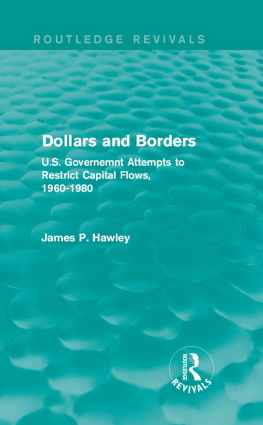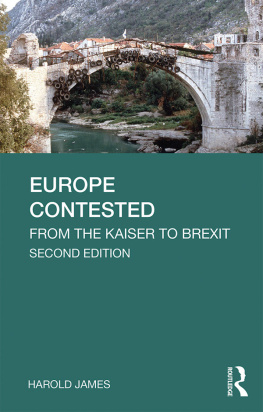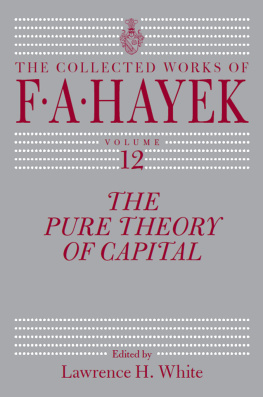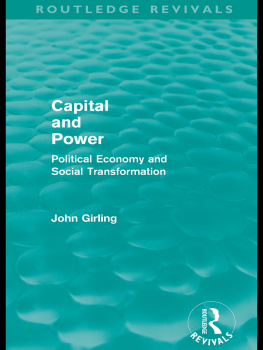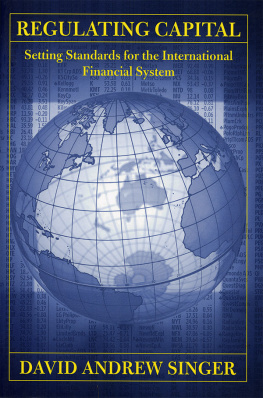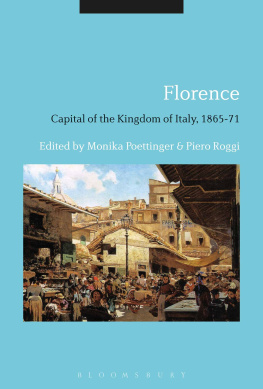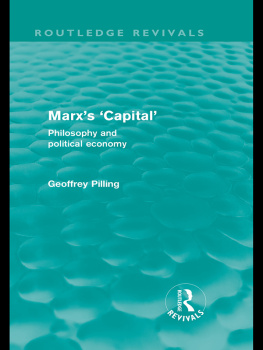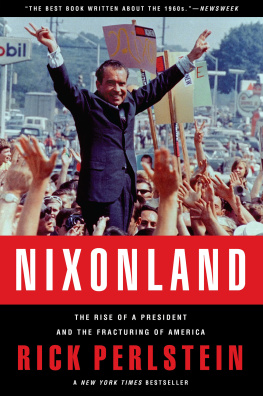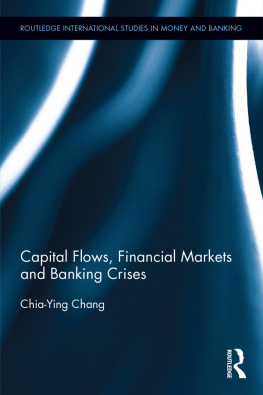Routledge Revivals
Dollars and Borders
Originally published in 1987, Dollars and Borders explores the United States governments relation to transnational capital. James P. Hawley traces the attempts of four presidents (John F. Kennedy, Lyndon B. Johnson, Richard Nixon, and Jimmy Carter) in the 1960s and 1970s to restrict international movements of U.S. capital and analyses the political and economic issues confronted by the government during this period. This title will be of particular interest to students of Politics and Economics.
Dollars and Borders
U.S. Government Attempts to Restrict Capital Flows, 1960-1980
James P. Hawley
First published in 1987
by M.E. Sharpe
This edition first published in 2016 by Routledge
2 Park Square, Milton Park, Abingdon, Oxon, OX14 4RN
and by Routledge
711 Third Avenue, New York, NY 10017
Routledge is an imprint of the Taylor & Francis Group, an informa business
1987 M.E. Sharpe
All rights reserved. No part of this book may be reprinted or reproduced or utilised in any form or by any electronic, mechanical, or other means, now known or hereafter invented, including photocopying and recording, or in any information storage or retrieval system, without permission in writing from the publishers.
Publishers Note
The publisher has gone to great lengths to ensure the quality of this reprint but points out that some imperfections in the original copies may be apparent.
Disclaimer
The publisher has made every effort to trace copyright holders and welcomes correspondence from those they have been unable to contact.
A Library of Congress record exists under LC control number: 86031395
ISBN 13: 978-1-138-18781-8 (hbk)
ISBN 13: 978-1-315-64288-8 (ebk)
DOLLARS & BORDERS
U.S. Government Attempts to Restrict Capital Flows, 1960-1980
JAMES P. HAWLEY
Copyright 1987 by M. E. Sharpe, Inc.
All rights reserved. No part of this book may be reproduced in any form without written permission from the publisher, M. E. Sharpe, Inc., 80 Business Park Drive, Armonk, New York 10504
Available in the United Kingdom and Europe from M. E. Sharpe, Publishers, 3 Henrietta Street, London WC2E 8LU.
Library of Congress Cataloging-in-Publication Data
Hawley, James P., 1944-
Dollars and borders.
Includes index.
1. Capital movementsUnited StatesHistory20th century. 2. Capital movements-Government policy-United States-History-20th century. 3. Euro-dollar marketHistory20th century. 4. Balance of payments-United States-History-20th century. I. Title.
HG3891.H38 1987 332'.041 86-31395
ISBN 0-87332-386-6
Printed in the United States of America
For Diane, Rebecca and Jesse and for my parents, Jane and Peter
Contents
This book is about the states relation to transnational capital. In the chapters that follow I describe the attempts of four presidents of the United States in the 1960s and 1970s to restrict international movements of U.S. capitalattempts that brought their administrations into direct and often acrimonious conflict with U.S.-based transnational corporations and banks. I trace the political and economic priorities of the U.S. government as it confronted, first, a chronic deficit in its international balance of payments and then growing worldwide economic disorder, brought about in part by rapid transformations in banking and finance. In the process, I attempt to reveal the dynamic relationships among state actions in the global political economy, the political and economic activities of transnational corporations and banks, and developments in global financial markets.
At the heart of the book are five case studies of attempts by the U.S. government, as issuer of the dominant global currency, to rectify its balance of payments and stabilize the dollar. In 196162 President John F. Kennedy proposed a tax reform that would have eliminated foreign tax credits and required transnational corporations to repatriate their foreign profits annually for tax purposes. The intention was to strengthen U.S. trade and goods exports at the expense of capital export growth. Kennedys initiative was strongly opposed by the transnationals and eventually the administration withdrew its proposal, citing improvements in the balance of payments.
In 1963 the U.S. balance-of-payments deficit was again large and the outflow of capital was increasing. The administration imposed an Interest Equalization Tax on transnational banks as a temporary means of minimizing capital outflows. The tax was opposed by the banks initially, and again in each renewal battle.
Faced with a still growing deficit, in 1964 President Lyndon B. Johnson established a voluntary capital-control program, which was again resisted by the transnationals, especially when it became apparent that the program was intended to last as long as there was a trade deficit. The inadequacy of the voluntary program and continued worsening of the deficit prompted introduction of a mandatory capital-control program in 1968 which, although greatly modified after the dollar was devalued in 1971, remained in effect until 1974. The mandatory program achieved its immediate goal of reducing capital exports from the United States, yet failed to accomplish its strategic goal of reducing the deficit and stabilizing the international monetary system.
Ironically, one clear, if unintended, effect of these state efforts to restrict capital movement was to encourage some dramatic innovations in international finance in the 1970sparticularly the creation of the Eurodollar marketthat would enable capital to better elude state control efforts.
In 1978 the administration of President Jimmy Carter and the Federal Reserve Board, embroiled in a dollar crisis and facing continued international economic instability, proposed multilateral regulation of the Eurocurrency markets. The proposal was defeated by the efforts of transnational banks domestically and by the lukewarm responses of most of the affected states. The erosion of state capacity to implement macroeconomic policy thus continued unabated.
These five case studies tell two stories. The first is about state policy-making efforts in the face of opposition from transnational capital; the second, about financial market innovation and the creation of new markets in response to state-imposed restrictions. Even when state policy was explicitly intended not just to maintain state power in the world system, but to rationalize markets and organize capital in order to protect it, the effect of state control efforts was rather to stimulate market innovation, which thus diminished state capacity to accomplish these very goals.
Four main conclusions will emerge in this account. First, the interests of transnational capital are complex and contradictory, and may not even be evident to corporate and financial actors themselves. Second, the state plays a part in defining capitals interests in a process of what I call interest mediation and formation, in which the ideology of state managers has a role. A third conclusion is that constraints are placed on the state by its particular economic, political, and military location in the world interstate system. Finally, it becomes clear in this account that there is a dynamic relationship between state intervention in financial markets and ongoing global financial innovation, which occurs, in part, to counter state efforts at control.

